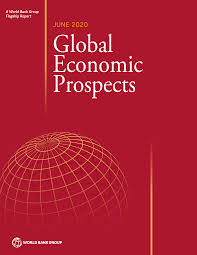Global economy on stronger footing, but suffers huge losses: IMF

The global economy is expected to see a strong rebound this year, but the coronavirus crisis is causing severe damage, slashings tens of trillions of dollars off GDP, the IMF said Tuesday.
"Now at $22 trillion," a figure equal to the size of the entire US economy, "the projected cumulative output loss over 2020 to 2025, relative to the pre-pandemic projected levels, remains substantial," IMF chief economist Gita Gopinath told reporters.
Optimism that new vaccines will bring the pandemic under control and allow economic activity to resume, coupled with stimulus in major economies, has boosted the IMF's growth forecast this year to 5.5 percent, according to its latest World Economic Outlook (WEO).
However, the Washington-based crisis lender warned the outlook is beset by "extraordinary uncertainty," and governments will need to continue to act to prevent lasting damage after Covid-19 caused the worst peacetime economic crisis since the Great Depression.
"Much now depends on the outcome of this race between a mutating virus and vaccines to end the pandemic, and on the ability of policies to provide effective support until that happens," Gopinath said.
The upgrade in growth after the 3.5 percent worldwide contraction in 2020 reflects "expectations of a vaccine-powered strengthening of activity later in the year and additional policy support in a few large economies," including the United States and Japan, the report said.
Those developments create "a stronger starting point for the 2021-22 global outlook."
However, "much remains to be done on the health and economic policy fronts to limit persistent damage from the severe contraction of 2020 and ensure a sustained recovery."
Surging infections in some countries and new Covid-19 variants that led to renewed lockdowns, as well as logistical problems with vaccine distribution, pose "important counterpoints to the favorable news," the report said.
By 2022, there will still be 110 countries that have not recovered to their pre-pandemic levels this year, and close to 90 million people will fall into extreme poverty, Gopinath said.
- Stronger growth -
The fund urged governments to continue to provide lifelines to struggling families and businesses "until the recovery is firmly underway."
In the US, which approved another large government stimulus package at the end of December, the IMF expects growth to be a full two points higher than previously projected at 5.5 percent, which would be the strongest rate since 1984.
Newly-installed President Joe Biden is pushing for another massive rescue plan costing $1.9 trillion that would provide further support to families, businesses and struggling state and local governments.
Gopinath said preliminary estimates indicate that level of spending would boost US GDP 1.25 percent this year, and 5 percent over three years.
Japan is also benefiting from an aid package approved in December, and the IMF raised its 2021 growth forecast by eight tenths to 3.1 percent.
Those stimulus measures also provide "favorable spillovers to trading partners," the report said.
The IMF expects China's economy to grow 8.8 percent, slightly slower than the October forecast, while India will surge 11.5 percent, fully 2.7 points higher than previously expected.
- Recovery setbacks -
In Europe, however, where governments have ordered new lockdowns and even curfews amid surging cases and the more infectious virus strains, the IMF slashed growth forecasts.
The euro area growth estimate was cut a full point to 4.2 percent, with significant downgrades for Germany, France, Spain and Italy.
While the IMF noted that London's last-minute deal on its exit from the European Union prevented a key risk to the outlook, the fund cut the forecast for Britain as well.








Leave Comment